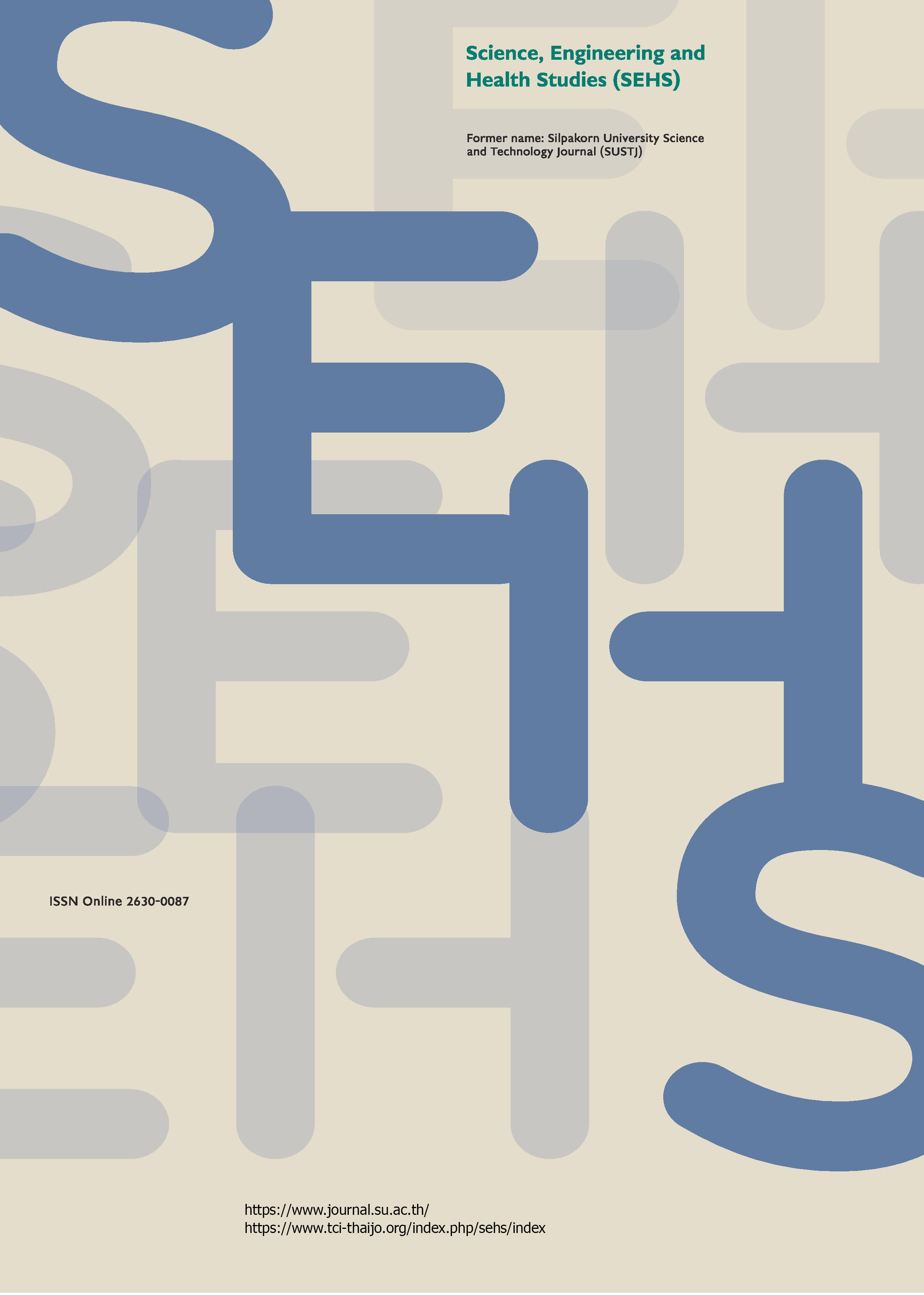Forecasting modeling of the number of cumulative COVID-19 cases with deaths and recoveries removal in Thailand
Main Article Content
Abstract
Coronavirus disease 2019 (COVID-19) could become one of the problems for the healthcare system in Thailand, thus forecasting the number of cumulative cases could be helpful to mitigate this. The present research was conducted to forecast the number of cumulative COVID-19 cases in Thailand and analyze any trends in the data. The predictive modeling was based on logistic models for cumulative COVID-19 cases with and without removing the deaths and recoveries data. Confidence intervals for and validation of the forecasting models were also given. The results showed that the logistic model performed better than the logistic model after deaths and recoveries removal but analysis of the behavior of the number of cumulative COVID-19 cases in Thailand by using the latter model was still pertinent. This research provided a predictive modeling tool to help the authorities developing policies for controlling the spread of COVID-19 in Thailand.
Downloads
Article Details

This work is licensed under a Creative Commons Attribution-NonCommercial-NoDerivatives 4.0 International License.
References
Anastassopoulou, C., Russo, L., Tsakris, A., and Siettos, C. (2020). Data-based analysis, modelling and forecasting of the COVID-19 outbreak. PLoS ONE, 15(3), 1-21.
Bertozzia, A. L., Franco, E., Mohler, G., Short, M. B., and Sledge, D. (2020). The challenges of modeling and forecasting the spread of COVID-19. Proceedings of the National Academy of Sciences of the United States of America, 117(29), 16732-16738.
Edwards, C. H., and Penney, D. E. (2008). Elementary Differential Equations with Boundary Value Problems, 6th, New Jersey: Pearson Education, Inc., pp. 480-553.
Gao, Y., Zhang, Z., Yao, W., Ying, Q., Long, C., and Fu, X. (2020). Forecasting the cumulative number of COVID-19 deaths in China: a Boltzmann function-based modeling study. Infection Control and Hospital Epidemiology, 41(7), 841-843.
Kharab, A., and Guenther, R. B. (2011). An Introduction to Numerical methods: A MATLAB Approach, 3rd, USA: CRC Press., pp. 39-82.
Li, L., Yang, Z., Dang, Z., Meng, C., Huang, J., Meng, H., Wang, D., Chen, G., Zhang, J., Peng, H., and Shao, Y. (2020). Propagation analysis and prediction of the COVID-19. Infectious Disease Modelling, 5, 282-292.
Liu, D., Clemente, L., Poirier, C., Ding, X., Chinazzi, M., Davis, J., Vespignani, A., and Santillana, M. (2020). Real-time forecasting of the COVID-19 outbreak in Chinese provinces: machine learning approach using novel digital data and estimates from mechanistic models. Journal of Medical Internet Research, 22(8), e20285.
Liu, L., Chen, Y., and Wu, L. (2020). Forecasting confirmed cases, deaths, and recoveries from COVID-19 in China during the early stage. Mathematical Problems in Engineering, 2020, 1-4.
Papastefanopoulos, V., Linardatos, P., and Kotsiantis, S. (2020). COVID-19: a comparison of time series methods to forecast percentage of active cases per population. Applied Science, 10(11), 3880.
Perc, M., Miksić, N., Slavinec, M., and Stozer, A. (2020). Forecasting COVID-19. Frontiers in Physics, 8, 127.
Petropoulos, F., and Makridakis, S. (2020). Forecasting the novel coronavirus COVID-19. PLoS ONE, 15(3), e0231236.
Shinde, G. R., Kalamkar, A. B., Mahalle, P. N., Dey, N., Chaki, J., and Hassanien, A. E. (2020). Forecasting models for Coronavirus Disease (COVID-19): a survey of the state-of-the-art. Springer Nature Computer Science, 1, 1-15.
Worldometer. (2020). Reported cases and deaths by country, territory, or conveyance [Online URL: https://www.worldometers.info/coronavirus/country] accessed on August 31, 2020.


